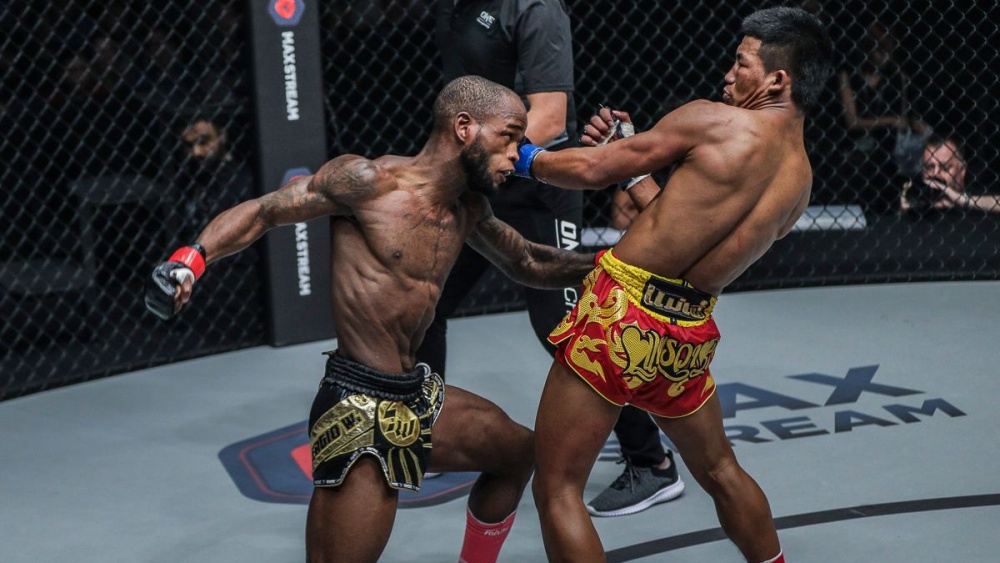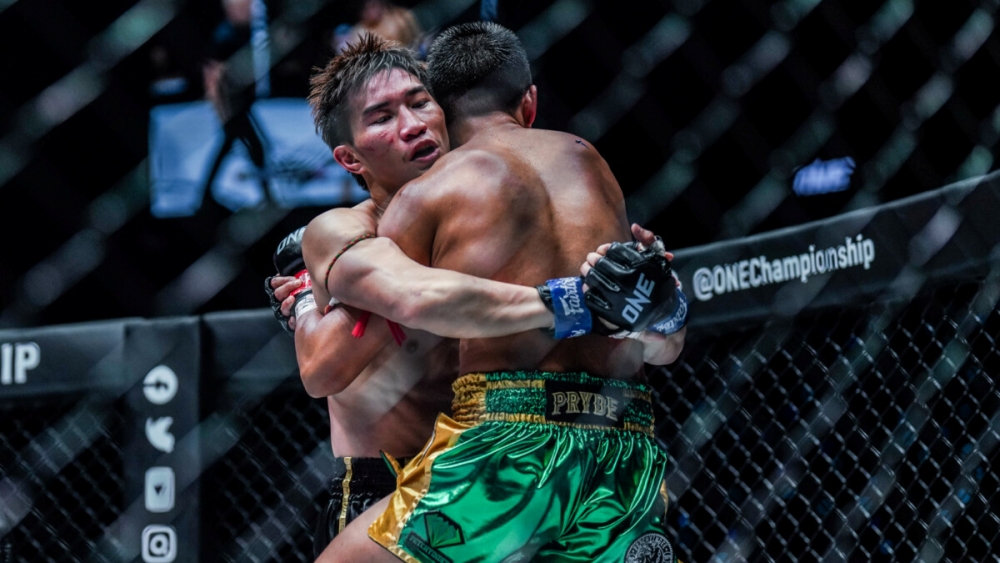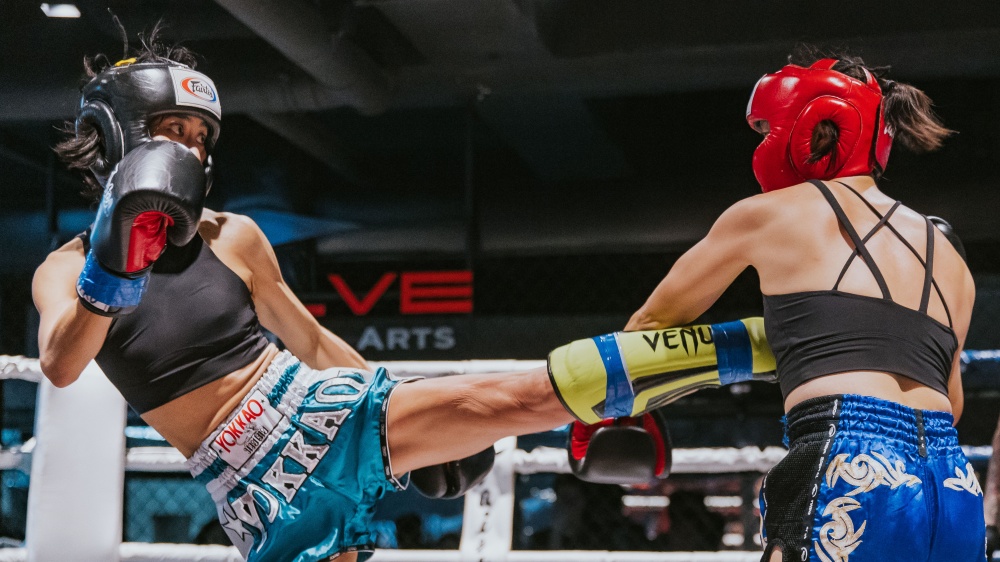Every Muay Thai practitioner needs a solid defense. This includes the obvious components like learning to block and move your head, but it also includes finding a good guard that you like to hold. It’s important to play with different guards to figure out a guard style that suits you and your fighting style. Even more important is giving yourself time to play with a few different types of guards to gain exposure to some of the various styles you might enjoy.
Not only is practicing various guards good for figuring out what you like and prefer, but it also gives you the ability to get skilled at more than one style, making you better able to adapt to your opponent. If you are looking to try out a new guard style to work on and eventually master, check out one of these:
1) The Long Guard
The long guard looks like it sounds. It utilizes an elongation of your arms and gives you space and range from your opponent. It is ideal if you prefer to fight a bit more on the outside, and gives you space to find time to respond and react to your opponent’s movements and strikes.
How To Perform The Long Guard:
- While facing your opponent, lift your hands up towards your face.
- Rather than pulling your hands tight to your face, extend them out and away from your face and towards your opponent.
- Your lead hand will stretch further out ahead of your other hand toward your opponent, creating a frame for space.
- Stay light on your feet so you can check or teep to defend incoming kicks while maintaining your long guard.
What The Long Guard Is Good For:
- It gives you plenty of space to defend yourself.
- It lends well towards teeps and fighters who like to throw teeps.
- It impairs your opponent’s line of sight, leading to striking opportunities for yourself.
- It helps you maintain a solid base.
If you think you’d appreciate having some extra space from your opponent and are looking for a solid way to defend yourself, the long guard is certainly one you might want to spend time practicing and implementing.
2) High And Tight Guard
The tight guard, again, is easily explained by its name. This guard is marked by a tightness of the guard. It is excellent to use when your opponent is throwing a lot of overwhelming strikes and you are aiming to avoid getting hit while you work your way into a better position to return strikes.
How To Do The High And Tight Guard:
- Pick your hands up towards your face.
- Pull your hands in tight towards your face, aligning your elbows so they are vertically squared up towards your opponent.
- As your opponent throws strikes at you, maintain your tight guard and use your elbows to parry the incoming strikes.
- Utilize movement from your body to angle your guard towards your opponent’s strikes.
What The High And Tight Guard Is Good For:
- It helps you to avoid damage from a heavy striker that has made their way to the inside.
- It gives you a chance to avoid damage while working towards a better position or an opening for counterstrikes.
- It’s great when an opponent suddenly rushes you and you need a quick defensive posture.
3) Hands Down
This is a more advanced option for a guard, and one that should be approached and tried once you have a solid base and foundation in Muay Thai. The reason for this is that fundamentally, you want to keep your hands up and guarding your face. As such, this guard is an advanced option for Muay Thai athletes that have a good foundation in Muay Thai and are able to understand the risks of having and playing with their hands down.
Beyond having a solid understanding of Muay Thai, this is a great guard for athletes who enjoy being elusive. It also tends to be a playful guard, so long as you keep your opponent at a good range while utilizing it.
How To Do The Hands Down Guard:
- Keep your hands low in front of the truck of your body.
- Allow your hands to float and move around at varying heights as needed, moving up into more of a “long guard” and back again.
- Utilizing footwork and head movement to avoid strikes and be elusive as your opponent tries to strike you.
What The Hands Down Guard Is Good For:
- It helps elusive fighters maintain their elusiveness.
- The lowered hands allow you to have a slimmer profile and move your body more quickly out of the way.
- It makes for a fairly quick transition to the long guard, giving you options for transitioning from one guard to another.
- It’s a great way to get in your opponent’s head as you are overtly playing with (and bending) the “keep your hands up” rule.
If you like being elusive and playful and feel that you have good movement to avoid strikes, be sure to try out the Hands Down guard.
Master These Guards
These three guards are all commonly used in Muay Thai. They all serve varying purposes and allow you to fight in varying ways. This is ideal as each person you go up against will have their unique style, requiring your unique response. Mastering more than one type of guard allows you to be a more diverse fighter as you can move between different guards.
While the Hands Down Guard is an advanced guard, it’s still a guard worth exploring and playing with once you have a solid Muay Thai foundation. The Long Guard will help you to keep your range and block incoming kicks while also causing a distraction in your opponent’s line of sight. The High and Tight Guard is excellent for heavily pressuring opponents, especially if they are throwing a lot of punches.
By mastering all three of these guards in your toolbox, you’ll have a well-rounded defensive posture and game to begin building your offense. If you haven’t yet found a favorite guard, or are starting to explore adding a new guard to your game, try out some of these guards.
You may also like:

















